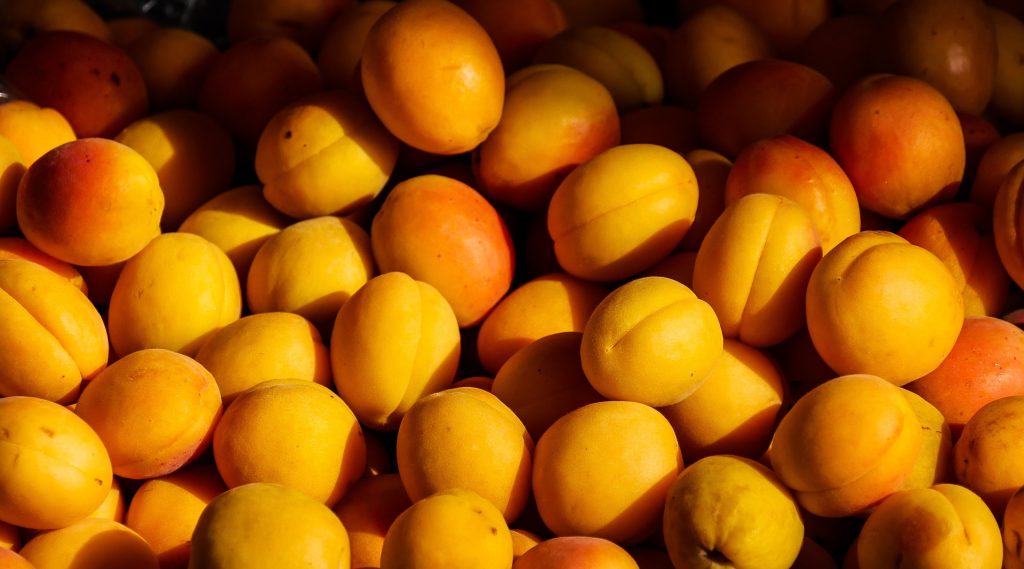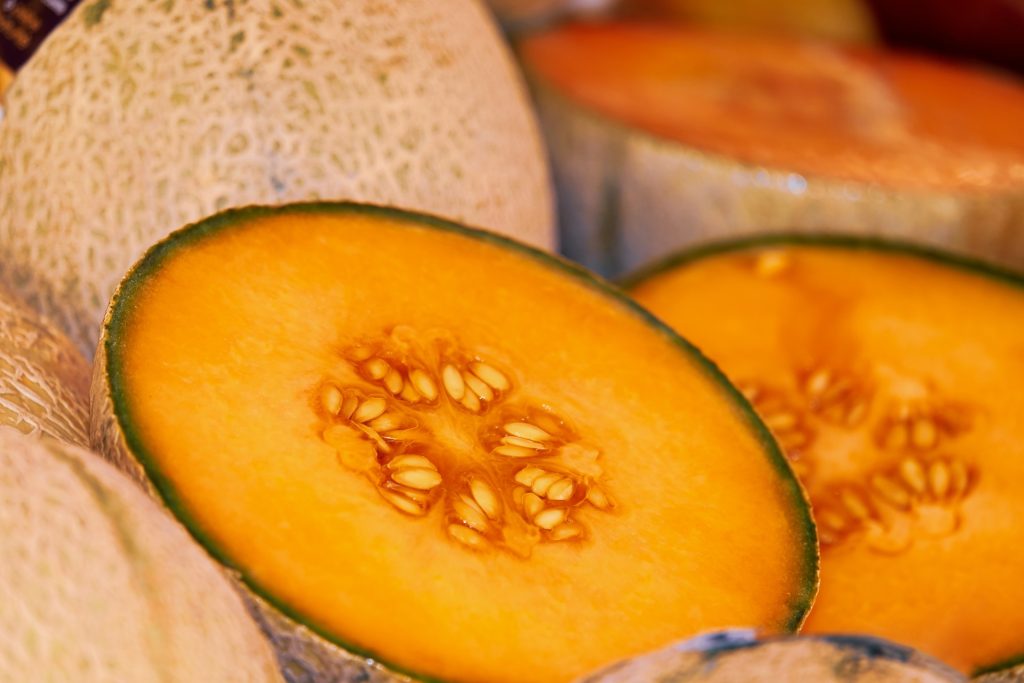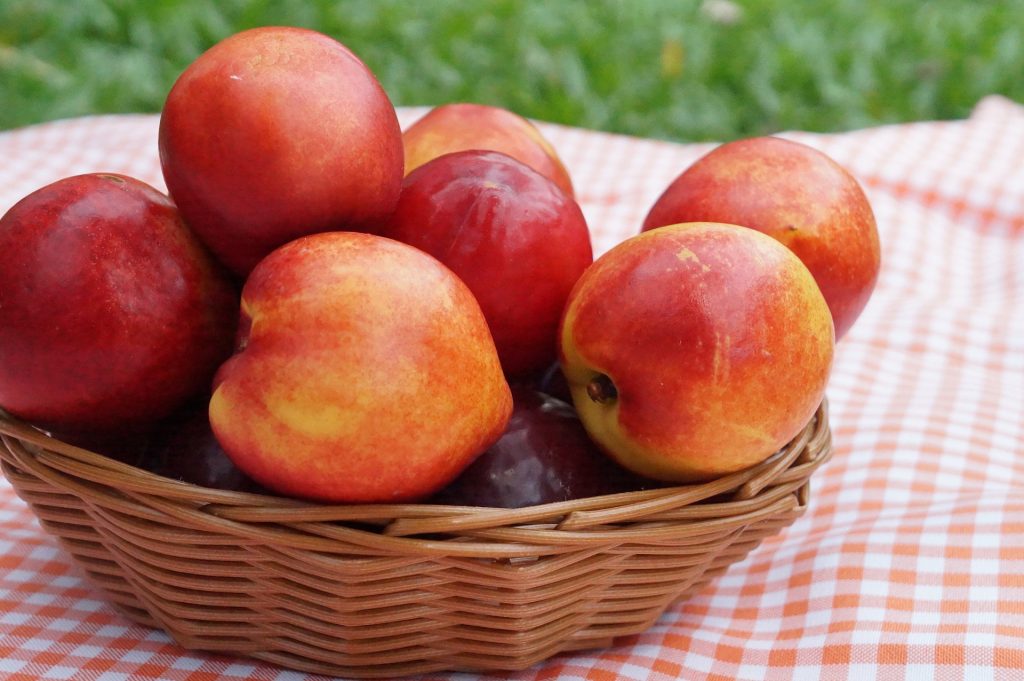Blog
Find articles that matter. From trading to shipping, trends to valuable goods, you can deep dive into everything you need.
Latest Posts
Blog
There is a myriad of terminology associated with shipping. Naturally, some terms are similar to each other. Knowing the terms is very important for the legal safety of the processes. So much so that inaccurate and incomplete documentation may end up in the ICC International Court of Arbitration. To avoid such problems, it is important to master the terms. A bill of lading and bill of exchange are terms that have similarities. In this article, we explained in detail the differences between the bill of lading and the bill of exchange.
What is the Bill of Lading?
A bill of lading is a record of the goods traded. Also, it is an agreement between the shipper and the shipping company for the transportation of goods. The carrier company provides this document to the shipper. A bill of lading (BOL) is an important legal document for shipping and logistics. This document specifies the goods shipped, where the shipment came from, and where they will go.
A bill of lading is necessary for a freight shipment. The bill of lading has three functions. First, it is a freight service receipt. Besides that, it works as a contract between the carrier and the sender and a document of title.
The bill of lading specifies the details of the carrier and the conditions for transporting the shipment to its destination. Thus, it plays an important role in land, ocean, and air shipments.
The carrier or an authorized agent issues the bill of lading when the goods leave the port of shipment. Thus, BOL protects the shipper in case the goods are damaged before loading. The document includes details such as sender, receiver, notifying party, goods, and weight. Moreover, this document also functions as a receipt. Shipper verifies loading with BOL. Bill of lading also includes terms of carriage.
Importance of Bill of Lading
A bill of Lading is first and foremost legally binding. So, it is vital for the smooth operation of the shipping process. The bill of lading helps determine freight and customs charges. It is also extremely important to track the link between agents. The BOL indicates the responsibilities of the carrier as well as the details of the goods and the parties. Hence, BOL doesn't just provide the details. It is also a legal document that protects the sender's rights.
For more information about the bill of lading, you can read our article by clicking here.
What is a Bill of Exchange?
A bill of lading is a binding agreement for the payment process. This document requires one party to pay a fixed amount to another party on a specified date or upon request. A bill of exchange is an important document for international trade. This document is a negotiable instrument. The seller, or the exporter, issues the bill of exchange to the buyer or the importer.
Generally, three parties are involved in the bill of exchange. These are the drawer, drawee, and payee. The drawer is the party that pays the amount specified in the bill of exchange to the payee. The drawer requires the drawee to pay. Thus, the drawee makes the payment to a third party or drawee. The payee is the party that the drawee pays the amount specified in the bill of exchange.
The bill of exchange plays a major role in international trade. But it is not just a document specific to international trade. It is also a significant document for shipping operations within the country. After the shipment, the exporter's bank forwards the necessary documents and the bill of exchange to the buyer's bank.
The bill of exchange does not only include the payment request. It also includes a confirmation order for payment. Both the drawer and the drawee must sign the document. The amount and date on the bill of exchange must be definite.
Importance of Bill of Exchange
A bill of exchange is especially important for international shipping. The fact that the bill of exchange is a legal document protects the drawer. Because if the drawee does not make the payment, the drawer can easily recover the amount legally.
The bill of exchange can be a solution to the drawer's urgent money needs. If the drawer needs money, he can convert the bill of exchange into cash at the bank. But, of course, he has to pay a small amount to the bank for this. Finally, one party can exchange the bill of exchange with another party to adjust the debt. In conclusion, the bill of exchange is a legal document with great advantages, especially for the drawer.
Click here for more detailed information about the bill of exchange.
Difference Between Bill of Lading and Bill of Exchange
We have looked in detail at what a bill of lading and a bill of exchange are. Now we can see the differences between these two terms more clearly.
The bill of lading details which goods the shipper has received. It also indicates where the goods go. For post-delivery, it functions as a receipt. On the other hand, the bill of exchange is a payment-related document. This document is like a promissory note. Because it legally requires the buyer to pay an agreed-upon amount by a specified date. As a result, the most important difference between a bill of lading and a bill of exchange is their definition.
A bill of lading is a contract between the shipper and the seller. It lists details about the items, the recipient, and the recipient's address, as well as the buyer's receipt. Like BOL, the bill of exchange contains details of the products. It lists what the products are and their quantity on the bill of exchange. But the bill of exchange is basically a receipt demanding payment. Thus, the bill of exchange also includes the due date and bank information.
In conclusion, both BOL and the bill of exchange provide the parties with the necessary information for the trading process. Yet, the purposes of the two documents are completely different from each other.
The export market is growing with each passing year, with the advancement of technologies and the improvement of global communication. The supply-demand balance also affects changes in the export and import data.
Turkey exports a wide range of goods to all countries. The United Kingdom is one of the most significant nations in long-standing export deals. The export and import of goods between the United Kingdom and Turkey deepen their cordial relations.
Why does the UK need products from Turkey even though it is a large and highly developed country? This question has always been on everyone's mind. Not only the United Kingdom, but all developed countries in the world demand Turkish products. Extensive Turkish products, both in quality and variety, are also attracting the UK.
Which products does the UK import from Turkey? Many products were exported to the UK on a sectoral basis, according to the export data released on a group basis. In terms of Turkey's overall export figures, the growth in export rates to the United Kingdom, particularly in the years 2021–2022, is significant.
Turkey generated 3 billion 57 million 155 thousand dollars in exports to the United Kingdom in the first quarter of 2022. Exports to the UK climbed by 12.2 percent from the previous year. These numbers suggest that in the upcoming years, there will be changes in the diversity of products and an increase in exports.
The product groups that the UK imports the most from Turkey can be listed as follows:
Automotive
Turkey is one of the important countries in the automotive sector in terms of both workforce and production. It is the 4th country in the production of the automotive industry in Europe. The automotive sector items are at the top of the list of goods that the UK imports from Turkey on a sectoral basis. The Turkish automobile sector earned 812.6 million dollars from the United Kingdom in the first quarter of 2022.
Motor Land Vehicles
Turkey is one of the important countries in the production of motor vehicles. Similarly, Turkey is a major source of automobile imports for the UK. Vehicles having the highest ratio among the goods imported from Turkey include cars, minibusses, and midibuses. Both semi-diesel and diesel vehicles are imported by the UK.
Textile
Turkey's textile and clothing industry is in demand from the United Kingdom because of the country's reputation as a textile producer. Turkey offers a wide variety of goods and exports a variety of textile goods to the UK. It offers a diverse market for everything from yarns to fabrics, from shirts to dresses, to distribute its high-quality goods throughout the world. Especially in the field of ready-made clothing, the United Kingdom was listed as the 3rd country to which Turkey exports the most, according to 2022 data.
Fabric
When we look through the textile and raw material set, the first thing that catches the eye is the fabrics. Turkey is an important fabric supplier to the UK. Turkey has long been nationally known for its textiles due to the location of its cities on the Silk Road route. Silk is among the popular products imported by England from Turkey.
Baby Clothes
Baby clothes are the most exported garments of the textile group to the United Kingdom. Offering a comprehensive market from booties to overalls, from dresses to t-shirts, Turkey draws attention, especially with anti-allergic products. Useful baby products, which are suitable for the sensitive skin of babies, are also popular in the UK.
Women's / Men's Clothing
Turkey, which started a new era in adult clothing with its color scale and variety of models, is also the country preferred by the United Kingdom for imports. For both underwear and outerwear, the UK imports most of its products from Turkey.
Electrical Devices
Turkey is a manufacturing powerhouse that leads the world in both the manufacture and export of electrical goods. Turkey is a source of electrical equipment imports for the UK. It considers the market for the raw materials used in the production of those gadgets as well as the device itself. Everything from batteries to insulated cables is a favorite in the UK.
Motors
In particular, all kinds of motors, from industrial motors to small tool motors, are among the products imported by the UK.
Gemmery
The mines of Turkey are accepted as the homeland of world-renowned precious stones. The increasing interest in natural stone, especially in the last five years, has also affected the export and import sectors between countries. The UK imports many products in the precious stones category from Turkey. Natural stones to be used for jewelry are among the products that the United Kingdom demands from Turkey. The United Kingdom also imports especially natural stones in raw form. Some of the most imported natural stones are as follows:
- Gold
- Jasper
- Obsidian
- Limestone
Metals
Another group is metal and metal group products. It can be considered as another group that the United Kingdom imports from Turkey. It imports chrome, copper, zinc, and many other products from Turkey and uses them in the production industry. But, especially as Turkey is at the forefront of exporting copper and aluminum products, the United Kingdom has imported these products the most.
Feel Confidence in Turkish Goods
Turkey exports many product groups to the United Kingdom with its quality and reliable products. However, people who want to import products to the UK have many problems with reliable suppliers. For this reason, insecurity in the export and import market affects purchasing. The import and export market is an area that needs to be carefully considered, from product quality to transportation.
For this reason, Turkish Goods, which adopts trust and care as a principle at every stage, is also the choice of the United Kingdom. Turkish Goods is a reliable brand that acts as a bridge between suppliers and buyers. You can import all kinds of products from the automotive sector to metals with the assurance of Turkish Goods.
Sustainability as a subject is gaining more and more importance in the world as humans are realizing the impact they have on the environment. The future of the Earth is strictly related to our current practices. Therefore, in many different areas of life sustainable practices have been drawing attention.
Trade is one of the subjects where sustainability becomes important. Due to being a large-scale operation, trade transactions often have a great impact on the environment due to the transportation process and the goods being transported. In that sense, it is fundamental to understand sustainability and how it could play an important role in trade practices. In this article, we have tried to explain what sustainability is, how it relates to trade and ways trade can become sustainable.
What Is Sustainability?
When considered as a broad term, sustainability is a term that refers to the goal of humans safely co-existing on Earth for a long period. According to UN World Commission on Environment and Development, “sustainable development is development that meets the needs of the present without compromising the ability of future generations to meet their own needs."
Yet, there is not a definitive description of sustainability and the existing ones may vary. Even though there is not a clear description, it is usually explained through three dimensions. These three dimensions are environmental, social and economic.
Dimensions of Sustainability
The dimensions of sustainability emerged in the 2005 World Summit on Social Development. Sustainable development goals were defined in three categories: economic development, social development and finally, environmental protection.
- Economic Sustainability: It deals with the ecological and social consequences of economic activities. On the other hand, it ensures that humans have access to all the resources they need to continue their life, be independent and meet their needs.
- Social Sustainability: It indicates that all members of a society are equal and have equal rights. Everyone can easily access their basic needs and resources which creates a healthy and safe social environment.
- Environmental Sustainability: It refers to balanced environmental systems where natural resources are not depleted. Natural resources are consumed at a slow rate and given enough time to replenish themselves.
Why Is Sustainability Important?
Sustainability has different aspects to take into account when its importance is in question. Sustainability is important in improving the quality of life on earth, and ensuring the ecological balance is kept. However, it may be difficult to understand its importance and look beyond these general terms. Let us take a deeper look into why sustainability is important.
Creates A Better Future
The action of humans shapes the future of our world. We are often forgetful of the fact that without nature and ecological stability, we cannot survive. By adopting sustainable practices in everything we do, we can help to create a better future for everyone. By preserving our natural resources we help to ensure that future generations will be able to benefit from them.
Less Energy Consumption
With businesses adopting sustainable practices, energy consumption in the world is reduced. Renewable energy is another important point for ecological balance. Simple changes in the way we consume energy can have a significant impact on the environment in the long run.
Healthy Environment
When sustainable practices are implemented, it results in many positive changes. Water and air quality improve, renewable energy sources increase and landfills are reduced. Being sustainable will also decrease our carbon footprint which will, in return, reduce the toxins released to the environment. As a result, it creates a healthy environment to live in for everyone involved.

What Is Sustainability in Trade?
In essence, sustainability in trade takes the same basic ideas in its approach to business and trade transactions. For sustainable trade to take place, commercial exchanges of goods should create environmental, social and economic benefits.
This, of course, goes hand in hand with the three dimensions of sustainability we mentioned earlier. Overall, sustainable trade should create economic value while preserving natural resources and improving social conduct.
Ways Trade Can Be More Sustainable
As environmental issues are getting more attention in recent years, ways to become more sustainable are gaining importance. On a personal level, individuals are trying to reduce their waste and carbon footprint by living more eco-friendly lifestyles. The same idea has started to emerge in businesses. Business owners are becoming more aware of the environmental impact they create and take initiatives to be more sustainable.
Similarly, sustainability in trade has become one of the hot topics since traditional trade practices can have a negative impact on the environment on a larger scale. In recent years, there have been new initiatives emerging on the subject. New developments take place to make trade practices more sustainable each and every day. Let us discover what those initiatives are and how they can benefit the environment.
New Initiatives by Governments
At the end of 2021, over 70 countries came together to collaborate on environmental sustainability and trade. The goal of the gathering was to discuss the trade policies that were linked to actions affecting the climate. In a different setting, over 60 governments also came together to discuss plastic pollution and trade. Their focus was plastic alternatives and managing waste in a sustainable manner among other topics. Initiatives such as these ones can help humans review the trade policies and reduce the barriers to eco-friendly goods as well as services.
UN Environment Assembly
At the annual gathering of the UN Environment Assembly that took place in early 2022, countries focused on establishing a committee for plastic pollution. Even though the details regarding the subject are not yet clear, the aim is to reduce the impact of plastic pollution in oceans as well as on land.
New Rules
EU is coming up with new rules and policies in regards to sustainability and trade. In 2021, the European Commission released a proposal to prevent carbon leakage. It is also planned that a draft strategy will be released in regard to sustainable textiles and a sustainable products policy. The aim of all these initiatives is to improve traceability and transparency while also improving the value chains.
Turkish Goods Places Importance on Sustainable Trade
As Turkish Goods, we strive to make the import process as smooth and secure as possible for the parties involved. Our experts find the best products for you and take care of the entire process to create a satisfying trade experience. In addition to this, Turkish Goods understands the impact trade can have on the environment and adopts sustainable practices to help create a better future for everyone.
Apricots are among the favorite fruits in the whole world. In addition to its benefits as food, it also finds a place for itself in the cosmetics and pharmaceutical industries. This fruit, which is beneficial for most areas of life, is grown in various parts of the world. Yet, some countries stand out in apricot production and exports.
Global apricot production rose to $4.8 billion in 2021. Let's take a look at the leading countries in apricot exports.
Turkey
It is not surprising that Turkey is at the top of the list. Because Turkey is home to Malatya, the apricot capital of the world. Of course, Malatya does not have the only share in Turkey's apricot production. An average of 128 thousand hectares of land serves apricot production in Turkey. In addition to Malatya,, Elazig, Mersin, Iğdır, and Antalya provinces also come to the fore in apricot production.
Malatya has a 64% share in the apricot production area. Apricot cultivation is very common in the Aegean, Mediterranean, Central Anatolia, and Marmara regions of Turkey. Hence, Turkey's apricot export figures are also quite high.
Turkey exports both dried and fresh apricots. According to the data from the Turkish Statistical Institute (TURKSTAT), Turkey produced 850 thousand tons of apricots in 2020. The country earned $321 million from apricot exports in 2020. In 2021, Turkey produced 840 thousand tons of apricots.
Turkey's apricot exports are increasing every year. Especially the export of dried apricots is a significant source of income for the country. Turkey exported 338 million dollars of dried apricots in 2021. In particular, Malatya meets about 85% of the world's dried apricot needs. Exporters from Malatya exported 90 thousand 203 tons of dried apricots in 2021. Turkey ranks first in the world in dried apricot exports with a share of approximately 72%.
Turkey ranks first in the world in dried apricot exports. On the other hand, the country ranks second in the export of fresh apricots.
Spain
Spain is the country at the top of the list in fresh apricot exports. Apricots grow in every region of Spain. Yet, some regions are prominent in apricot production. Murcia is the region that largely meets the needs of Spain in apricot production. The Murcia region meets 70% of Spain's apricot production. Besides, Aragon, Valencia, and Castile-La Mancha are important regions for apricot production.
Spain produced 93 thousand tons of apricots in 2021. Today, the country makes up 35% of the total fresh apricot export volume in the world. Spain earned $197 million from apricot exports in 2021. But, the storms and frosts in Murcia in the spring of 2022 negatively affected apricot production. Murcia is the most important apricot production center in Spain. Thus, there was a decrease in apricot production in Spain in 2022.
Uzbekistan
Apricots are important sources of income for Uzbekistan. The country stands out in the export of both fresh and dried apricots. Especially Fergana Valley has a large share in the country's apricot production. Yet, 2021 was not very suitable for fresh apricot production in Uzbekistan. Weather anomalies hit Uzbekistan in 2021. Thus, fresh apricot production decreased. Apricot production in the country decreased between 60% and 65% due to weather conditions.
Uzbekistan still managed to maintain its position on the list. Although 2021 was not very good for apricot production, Uzbekistan had great success in 2020. The country exported 11.2 tons of apricots in 2020. As a result, in 2020, Uzbekistan earned 10.9 million dollars from apricot exports. On the other hand, the country earned 49.2 million dollars from fresh and dried apricot exports. As a result, weather conditions hindered the production of fresh apricots. Yet, Uzbekistan continued its success with its dried apricot exports.
Italy
Italy is among the most successful countries in the Mediterranean in apricot exports. Apricots are one of the most important export items of Italy. Farmers grow apricots both in the north and south of the country. But the Emilia-Romagna region stands out in apricot production. Because this region meets 1/3 of Italy's apricot production. As a result, Emilia-Romagna is the main apricot producer in Italy.
In 2021, apricot production in Italy was 188,000 tons. The country exported 31 tons of apricots. Yet, this figure is a little low. Because, as in some countries, weather anomalies reduced apricot production in Italy as well. Still, apricot exports in Italy increased compared to 2020. The country exported 19 thousand tons of apricots in 2020. Moreover, according to estimates, Italy's apricot production will increase to 262 thousand tons by 2022. As a result, Italy's apricot exports will also increase.
Greece
Thanks to the favorable agricultural conditions of the Mediterranean, Greece is also on the list. Apricot production in Greece changes depending on the weather conditions. Yet, it generally hovers between 60,000 tons and 80,000 tons per year. Greece is among the top countries in apricot exports. But the number of places where apricots are grown in the country is few. Peloponnesos and Halkidiki Peninsula meet the apricot production of Greece. These small-scale industrial areas provide most of Greece's apricot production.
Greece produced 55 thousand tons of apricots in 2021. This amount is 29% less than the apricot production in Greece in 2020. As in most Mediterranean countries, the reason for this decline was frosts. But in 2022, apricot production started to increase in Greece. The producers have not yet reached the figures in the pre-frost periods. But production is on the rise. The country exported 17 thousand tons of apricots in 2021. In 2022, weather conditions did not prevent apricot production in Greece.
We Deliver the Best Quality Apricots to You
Turkish Goods is at your service for your fresh and dried fruit imports. We preserve the fruits with the cold chain method. Thus, they lose nothing of their freshness until they reach you. Besides, we work non-stop to provide you with the best quality fruits. Turkish Goods will be your best solution partner for your apricot imports.
Overall, international trade can be quite confusing. Every country has its own laws and regulations exporters and importers need to be aware of. Similarly, for a successful and problem-free trading experience, both parties need to know their responsibilities. This is exactly where Incoterms come into play.
Incoterms are essentially a set of terms published by the International Chamber of Commerce (ICC). Incoterms are also known as international commercial terms. They are fundamental in international trade because they clarify the obligations of both buyers and sellers. By doing so, Incoterms prevent any confusion that may arise during transactions. Therefore, they are used in international trade frequently to understand the exact terms of agreements.
Why Are Incoterms Important?
The history of Incoterms date back to the 1930s. The International Chamber of Commerce, also known as ICC, established Incoterms first in 1936. Since then, Incoterms have been updated periodically based on the changing practices in world trade.
When thought of as a set of rules and guidelines for international trade, Incoterms provide a safe environment for export and import. Acting as a common language between the buyers and sellers, Incoterms are helpful for parties to understand each other and their agreement more clearly. Activities that may seem simple such as labeling shipments or filling out a purchase order follow Incoterms.
An Overview of Incoterms
Incoterms are made up of 11 rules established by ICC. These rules define the responsibilities of buyers and sellers during trade transactions. These rules define such responsibilities in detail so that there is no room for confusion. The rules clarify the tasks of both parties, costs and risks involved during the entire process. This gives the buyer and the seller a clear picture of what they need to do and what they need to know.
There are different Incoterms for different modes of transport. As of 2020, there are two main categories. One category involves rules regarding any mode of transport. The other category involves rules regarding sea and inland waterway transport. Let us examine each category in detail and the rules within each category.

Incoterm Rules for Any Mode of Transport
There are seven Incoterms for any mode of transport. We have listed them and briefly explained what each of them means. Let us take a look.
- EXW (Ex Works): The only responsibility of the seller is to make the goods available to be picked up either at the location of the seller’s business or another specified location. On the other hand, the buyer undertakes all the transportation costs and risks involved.
- FCA (Free Carrier): The seller is responsible for delivering the shipping to a port that was agreed upon. The seller undertakes to export the goods as well as the processes before the export. The buyer becomes responsible for the shipment once it is ready to be loaded.
- CPT (Carriage Paid To): The seller delivers the shipment to a carrier at their expense and undertakes all risks and costs of transport.
- CIP (Carriage and Insurance Paid To): The seller undertakes all the risks until the goods are delivered to a carrier for the first time at the place of the shipment. The buyer assumes all the risks once the goods are delivered to the first carrier. Yet the seller remains responsible for the transport costs until the shipment reaches its destination.
- DAP (Delivered at Place): The delivery of the goods at the named destination is the responsibility of the seller. The seller undertakes all the risks until unloading. However, the risks and costs of unloading are the buyer’s responsibility.
- DPU (Delivered at Place Unloaded): The seller is responsible for all the risks and transportation costs until the goods arrive at the destination and are unloaded.
- DDP (Delivered Duty Paid): The seller undertakes all the transportation costs as well as the risks involved. The seller also clears the goods and pays export and import duties for the shipped goods.
Incoterm Rules for Sea and Inland Waterway Transport
There are different Incoterms when it comes to inland waterway and sea transport. We listed all 4 of them and explained them briefly.
- FAS (Free Alongside Ship): The seller is responsible for delivering the goods alongside the vessel at the port. The seller assumes all the transportation costs and risks involved until the goods are delivered at the dock. From this point on, the buyer assumes all the risks and transportation costs.
- FOB (Free on Board): The seller delivers the goods on board a vessel that was decided by the buyer. The buyer is responsible for the risks involved as well as the transportation costs once the goods are loaded on the vessel.
- CFR (Cost and Freight): The seller is responsible for arranging the transportation of goods by sea to the destination port. The seller is also responsible for providing the buyer with the necessary documents. However, the seller is not responsible for the insurance of the cargo in case of loss or damage during transportation.
- CIF (Cost, Insurance and Freight): The seller is responsible for delivering the goods to the ship, loading them onto the vessel and insuring the shipment until it reaches the destination. The seller undertakes the costs during the transportation. The buyer undertakes the responsibility for the costs once the shipment is delivered to the destination port.
How to Choose the Most Suitable Incoterms
It is important that importers and exporters know all the details regarding Incoterms. Because knowing the details of each Incoterms will help them choose the most suitable one. Choosing the most suitable option depends on the responsibilities buyers and sellers want to undertake.
Each of the Incoterms has different benefits for importers or exporters. They may want to reduce the risks involved in the transportation process, have more control over the costs or have more security in terms of logistics. Depending on their priorities, buyers and sellers should choose the Incoterms that are most suitable for their situation. This will allow them to have clear expectations regarding the process, know the risks and prepare accordingly.
As an importer, you can import products from Turkish Goods to have a problem-free process. The experts at Turkish Goods take care of the entire process and ensure security for both parties. Contact Turkish Goods to receive more information if you are planning to import goods from Turkey.
One of the terms frequently used in international shipping is the bill of exchange. A bill of exchange is a document. The seller or exporter prepares this document and forwards it to the buyer or importer. This document is a negotiable instrument. Thus, it guarantees a certain amount of payment to a certain person. Another name for the bill of exchange is draft.
The bill of exchange is legally binding. It requires the buyer to pay the seller within a certain time frame. The buyer usually pays after receiving the goods. Sometimes the buyer has a certain period after receiving the goods. For example, he can make the payment within 10 days after receiving the goods. Yet, a bill of exchange is not a contract. But, parties can use it to specify the terms of a transaction. These terms can be loan terms and accrued interest rates.
A bill of exchange is an unconditional written order. The seller instructs the seller’s bank to pay a specified amount. The seller can get a suitable form from his bank. Also, he can issue the document on a blank sheet of paper. A bill of exchange helps importers and exporters to fulfill transactions in international trade.
Parties to Bill of Exchange
A bill of exchange generally involves three parties. These parties are drawee, payee, and drawer. Drawee pays the amount. The payee is the party to which the payment is made. The drawer is the party that forces the drawee to pay the payee. Besides, the endorser, endorsee, and bearer are parties to the bill of exchange. Endorser transfers payment rights. The drawer endorses the bill of exchange in favor of the endorsee. The bearer is the person holding the bearer bill o exchange.
Information Included in Bill of Exchange
The bill of exchange includes the name and address of the payee. The amount to be paid, the date of payment, and the identification number are also in this document. Also, the bill of exchange has a signature section. A person authorized to undertake to pay the specified amount of funds to the drawee signs the document.
Types of Bill of Exchange
Demand Bill
Another name for a demand bill is the sight bill of exchange. As the name suggests, in the bill on demand, there is a payment if there is a demand. Bill on demand does not have a fixed payment date. In this bill type, the drawee makes the payment. In international trade, the demand bill allows the exporter to keep ownership of the exported goods. The exporter holds the ownership until the importer receives the delivery and pays.
Documentary Bill
In the documentary bill, some documents support the bill of exchange. These documents confirm the authenticity of the sale or transaction. The transaction takes place between the seller and buyer. There are two types of documentary bills. These are documents against acceptance and documents against payment.
- D/A (Documents against acceptance): With the D/A, the exporter instructs the presenting bank to issue the shipping and title documents to the importer. However, for this, the importer must accept and sign the relevant policies.
- D/P (Documents against payment): With D/P the consignee/importer receives the shipped documents only after the buyer's bank collected the payment.
Usance Bill
Another name for usance bill is time bill. Because it specifically indicates the time and due date of the payment. Thus, the usance bill is a time-bound document.
Clean Bill
A clean bill does not have a proof document. Since this invoice does not contain any documents, the charges for this invoice are higher compared to other types. Moreover, with a clean invoice, interest rates are high. Because there is no document in this bill type.
Inland Bills
An inland bill is a document payable only in one country. Hence, the inland bill is not payable in another foreign country.
Foreign Bills
Foreign bills are the opposite of inland bills. Thus, the relevant party in a country prepares foreign bills. Yet, the foreign bill is payable in another country.
Accommodation Bill
This bill serves both parties. It helps the parties without a transaction. It does not entail buying or selling any products or services. An accommodation bill is an agreement between two parties to provide financial assistance.
Trade Bill
Trade bill is common in international trade. If the parties prepare and approve the bill of exchange for a commercial transaction, the bill of exchange becomes a trade bill.
Supply Bills
The government office, suppliers, or contractors prepare the supply bills. The purpose of supply bills is to supply some goods. Supply bills help to get cash for pending payments from any financial institution to meet financial requirements.
Fictitious Bill
In a fictitious bill, the drawer, the drawee, or both are fictitious.

Importance of Bill of Exchange
Bills of exchange are helpful in cross-border commerce. Because they assist buyers and sellers in navigating the dangers of fluctuating exchange rates and varying legal systems.
Advantages of Bill of Exchange
A bill of exchange is a legal document. Hence, if the drawee does not make the payment on time, the drawer can legally recover the money. Moreover, if the drawer needs money urgently, the bill of exchange can help. The drawer can convert the bill into cash. Yet, he must pay some bank charges. Besides, the terms of the bill of exchange are final and do not change. Thus, there is no danger of changes.
A bill of exchange is unconditional. Hence, the drawee must pay the money when he receives the services specified in the invoice. Also, drawee should pay for the orders damaged due to some natural reasons. Yet, drawee does not have to pay if he hasn’t received the services mentioned in the document.
Risks of Bill of Exchange
The risk of a bill of exchange for businesses is that the drawee does not pay. Risks increase, especially if the drawee is an individual or a non-bank entity. Regardless of the drawee, the payee should research the creditworthiness of the issuer. If the drawee does not pay on the due date, the bill will be dishonored.
Would you like a smooth process with Turkish Goods quality in international shipping? You can ask us all your questions by clicking here.















